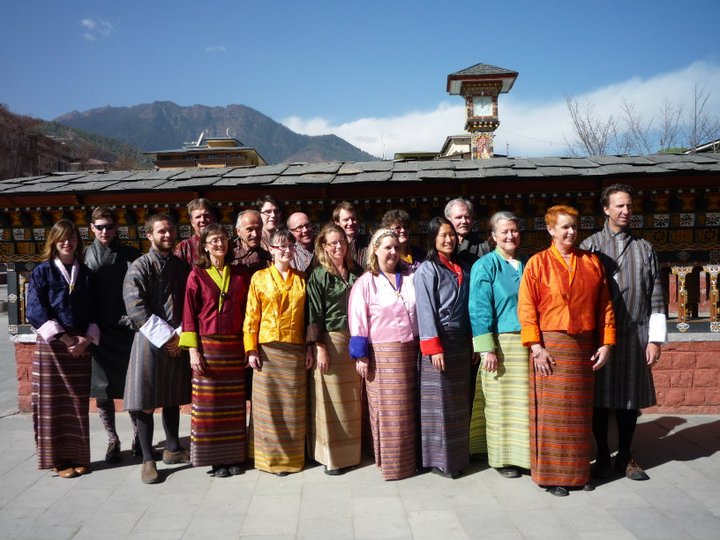Bhutanese National Dress
National dress is a part of Bhutanese culture that dates back to the 17th century when it was introduced to lend a unique identity to the people of Bhutan. All Bhutanese citizens are required to observe the national dress code during business hours, and students are required to wear uniform’s of national dress to school.
Men wear a gho, which is a knee length robe tied with a belt. The gho is folded in such a way that a pocket is formed in front of the stomach. This pocket is an extremely useful storage compartment – you would be surprised at the things that some out of those ghos! Women wear colourful blouses over which they fold and clasp a large piece of rectangular cloth called a kira, creating an ankle length dress. A short silk jacket, or toego, may be worn over the kira. Everyday gho and kira are cotton and wool according to the season, and are patterned in simple checks and stripes in earth tones.
For special occasions and festivals, colourfully patterned silk kira and, more rarely, gho may be worn. Additional rules of protocol apply when visiting a dzong or a temple, or when appearing before a high-level official. Male commoners wear a white sash called a kabney, from left shoulder to opposite hip. Local and regional elected officials, government ministers, cabinet members, and the King himself each wear their own coloured kabney. Women wear a narrow embroidered cloth draped over the left shoulder, called a rachu.
Last year our BCF teachers had great fun in their kiras…
BCF teachers are encouraged to wear national dress in school, but it is not mandatory. Many teachers have found however that wearing national dress is simply the easiest option, as it helps them to fit in and feel part of the community. It is also just a comfortable and practical piece of clothing to wear every day.While in Thimphu for orientation teachers have the opportunity to purchase and be fitted for national dress.
Check out the class of 2011 in their new gho’s and kiras!

